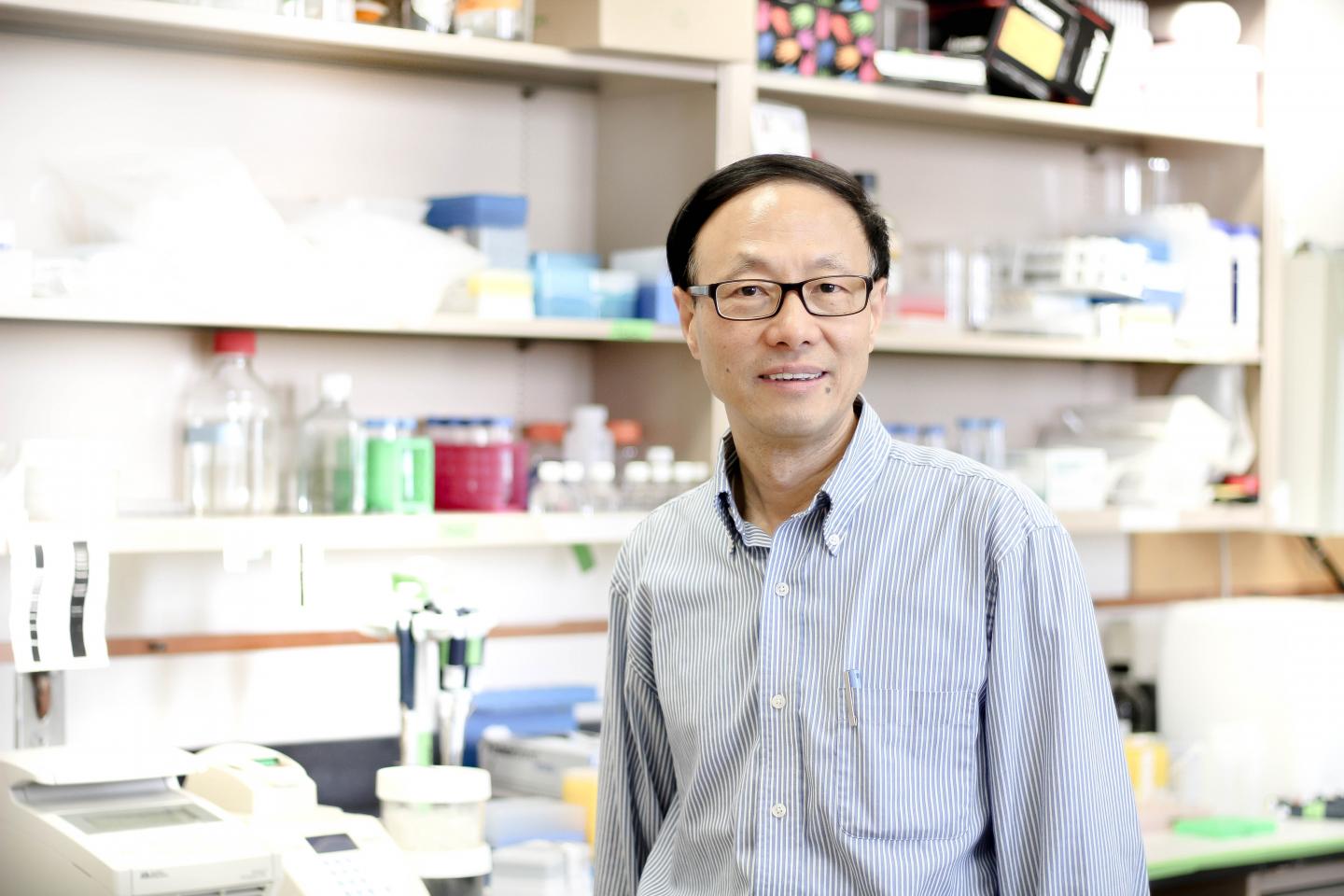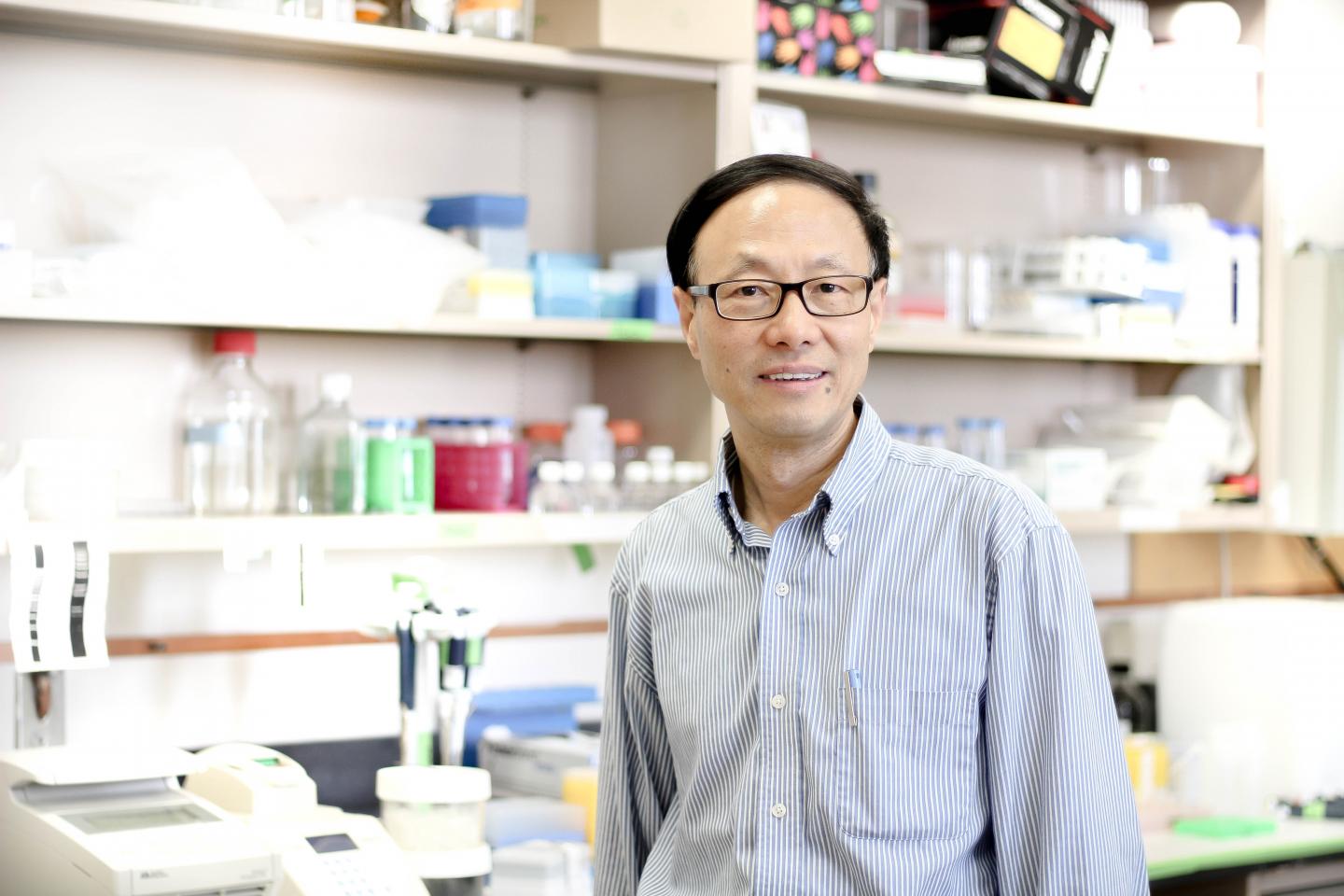
Credit: Melissa Fabrizio
University of Alberta scientists have pulled into the lead in a race to use nanomachines for improved disease detection and drug delivery in patients.
In a study published in Nature Communications, the researchers describe the creation of synthetic DNA motors in living cells. The process – previously only successful in test tubes – demonstrates how DNA motors can be used to accomplish specific and focused biological functions in live cells.
"This is really big because of the diverse potential applications," says Chris Le, Canada Research Chair and a distinguished university professor of laboratory medicine & pathology. "One outcome of this will be to provide better and earlier disease detection. Another is the controllable release of targeted drug molecules within patients, resulting in fewer side effects."
The team, which also includes Hongquan Zhang, an assistant professor of laboratory medicine & pathology, postdoctoral fellow Hanyong Peng, and Xing-Fang Li, a professor of laboratory medicine & pathology, created the nanomachine from compartments made up of DNA enzyme molecules and substrates. "This nanomachine has the required fuels, DNA tracks, and a molecular switch," says Zhang.
For the study, it was 'tuned' to detect a specific microRNA sequence found in breast cancer cells. When it came into contact with the targeted molecules, the DNA motor was turned on and produced fluorescence as part of a reaction. The researchers were able to monitor the fluorescence, detecting which cells were cancerous. Le believes the findings show great promise for the early diagnosis of disease.
"We want to be able to detect cancer or disease markers in very minute amounts before the disease gets out of hand. That way physicians can attack it very early," says Le. "The trace amount of the target molecules that may be missed by other techniques can now be detected with this one."
In addition to the potential for improved disease diagnosis, the researchers say DNA motors could also be used for precision drug delivery in patients. Conventional targeted drug therapy delivers medicine to a selectively targeted site of action, yet it still affects a large number of molecules that are not diseased. With the DNA motor, the team says a drug payload can be delivered and then released only when triggered by disease specific molecules.
"You still have some drug molecules going to the normal cells – you can't avoid that," says Le. "Using the DNA motor, we hope to deliver the drug into the cells in an inactive form. Only when the DNA motor encounters the targeted molecules can the drug then be released to be active."
While the team used a breast cancer marker for the study, the aim now is to expand the work to examine a wider range of other disease markers. Further testing on the nanomachines is needed to better understand the full range of capabilities for drug delivery.
###
Media Contact
Ross Neitz
[email protected]
780-297-8354
@ualberta_fomd
http://www.med.ualberta.ca
############
Story Source: Materials provided by Scienmag





